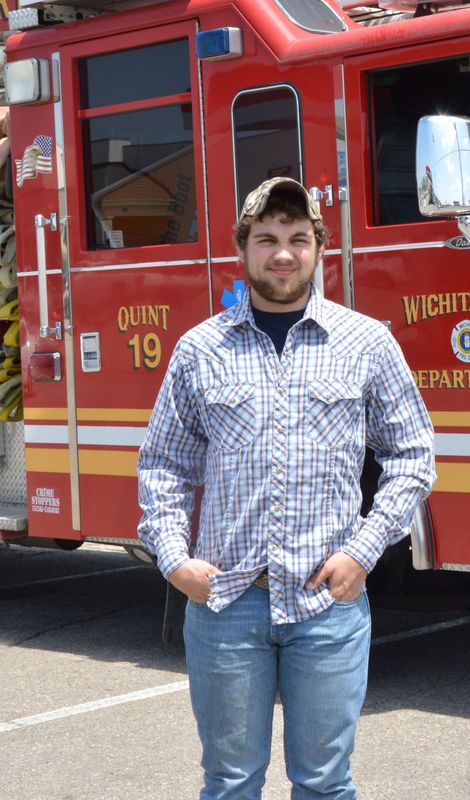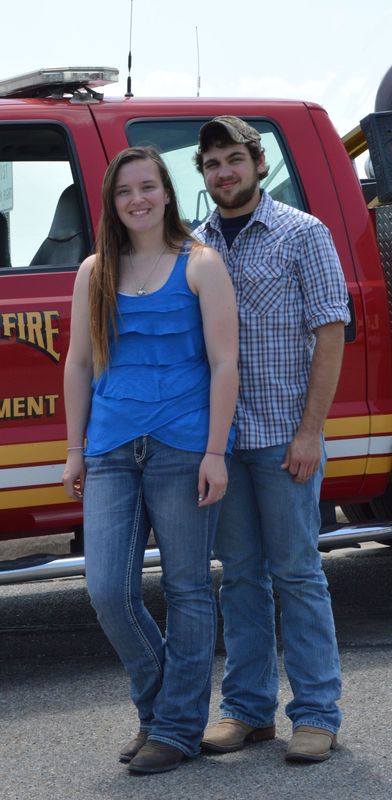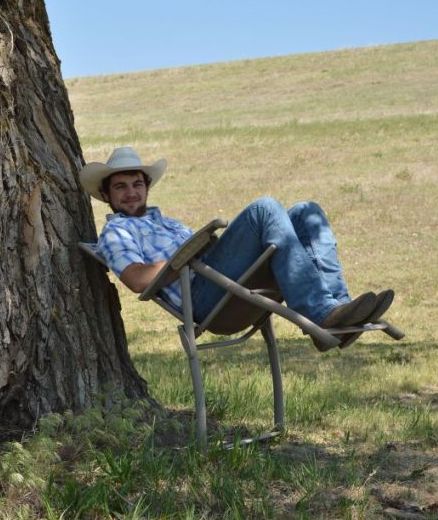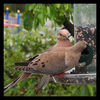PP: Dealing with squint
May 17, 2014 07:31:25 #
mikegreenwald
Loc: Illinois
I'm curious: how do YOU deal with squint and ptosis (paralytic drooping eyelid)?
For ptosis, I have copied, mirror imaged, and superimposed the good eye. That only works if the light, often artificial, is symmetrical. For quint the same is true, except squint is usually bilateral. If the squint is mild enough, Raising the eyelid with help from "liquify", then rebuilding the sclera, iris, and pupil the two eyes (careful cloning for all) may work. Occasionally, transplantng eyes from another photo may work too.
Does anyone have other thoughts, besides shooting more carefully in the first place?
For ptosis, I have copied, mirror imaged, and superimposed the good eye. That only works if the light, often artificial, is symmetrical. For quint the same is true, except squint is usually bilateral. If the squint is mild enough, Raising the eyelid with help from "liquify", then rebuilding the sclera, iris, and pupil the two eyes (careful cloning for all) may work. Occasionally, transplantng eyes from another photo may work too.
Does anyone have other thoughts, besides shooting more carefully in the first place?
May 17, 2014 08:51:29 #
Mike, I may not have fully understood the extent of the eye problem. If that person's eyelid always droops because of no fault of their own, that is part of the person.
In PP, if a person has a mole on the face, that's also a part of the person and shouldn't be removed in PP. A
pimple is a different story.
I hope I'm leading you down the right track.
GordonB.
In PP, if a person has a mole on the face, that's also a part of the person and shouldn't be removed in PP. A
pimple is a different story.
I hope I'm leading you down the right track.
GordonB.
May 17, 2014 09:19:25 #
If this is a permanent condition, I would not try to "fix" it. Maybe try and make photos more flattering by having the person turn his/her head slightly away from the camera.
A friend had one side of his mouth drooping down a fair bit (can't remember what the condition is called). A well-meaning photographer "fixed" that and I must say, did a wonderful job. But I heard at least two persons ask, 'who's that?'
Regardless of how severe the problem is, it is part of that person and my feeling is to try and flatter the person in the photograph with composition and lighting, but not by photoshopping.
A friend had one side of his mouth drooping down a fair bit (can't remember what the condition is called). A well-meaning photographer "fixed" that and I must say, did a wonderful job. But I heard at least two persons ask, 'who's that?'
Regardless of how severe the problem is, it is part of that person and my feeling is to try and flatter the person in the photograph with composition and lighting, but not by photoshopping.
May 17, 2014 10:06:09 #
mikegreenwald
Loc: Illinois
I understand your feelings - in part I share them. However if the subject asks for correction, as happened in the ptosis case, or if a photo is brought to me specifically for correction, then I believe PP correction is what I have to do.
Unrelated, the ptosis is sometimes temporary or medically correctable.
Unrelated, the ptosis is sometimes temporary or medically correctable.
May 17, 2014 10:28:12 #
mikegreenwald wrote:
I understand your feelings - in part I share them. However if the subject asks for correction, as happened in the ptosis case, or if a photo is brought to me specifically for correction, then I believe PP correction is what I have to do.
If you were asked to correct the issue, then, by all means, do it.
May 17, 2014 10:49:20 #
mikegreenwald wrote:
....However if the subject asks for correction, as happened in the ptosis case, or if a photo is brought to me specifically for correction, then I believe PP correction is what I have to do.....
Yes, in that case... and oh my, what a difficult task you have set yourself. (I would be very tempted to tell the subject, 'sorry, can't be done!')
OTOH, if you like a challenge: without seeing the photo, I would try the mirror image of the other eye first, taking as small a portion of the 'good' eye as possible, and very carefully blending the edges after it has been put in place.
If this condition has not existed for very long, are there any photos that could be used to copy-and-paste the good eye?
I wish you much success with this, it certainly is a daunting task!
May 17, 2014 11:08:35 #
Morning Star wrote:
If this is a permanent condition, I would not try ... (show quote)
Sounds like the ailment was Bell's Palsy.
May 18, 2014 05:38:26 #
"In PP, if a person has a mole on the face, that's also a part of the person and shouldn't be removed in PP."
I have been fortunate to photograph a pretty well-known model, Liz Ashley. She has a small mole on the left side of her face.
There are thousands of photos of Liz on the internet, most of the time the mole is left alone, sometimes it has been removed in post-processing. I asked her how she felt about that, and she said that she did not mind at all.
I also asked if she ever resented any photo manipulation, and she told me that the only thing she did NOT like was if a photographer changed the color of her eyes (which are a beautiful shade of green, by the way - I cannot imagine why someone would want to change the color).
I have been fortunate to photograph a pretty well-known model, Liz Ashley. She has a small mole on the left side of her face.
There are thousands of photos of Liz on the internet, most of the time the mole is left alone, sometimes it has been removed in post-processing. I asked her how she felt about that, and she said that she did not mind at all.
I also asked if she ever resented any photo manipulation, and she told me that the only thing she did NOT like was if a photographer changed the color of her eyes (which are a beautiful shade of green, by the way - I cannot imagine why someone would want to change the color).
May 18, 2014 06:15:16 #
May 18, 2014 07:55:17 #
Members: I too had a terrible problem with a young man while taking Senior photos. Without his sun glasses on he had a horrible squint. We did everything I know to eliminate the squint and really nothing we did worked. Even when he had his cap on, in the open areas his squint was uncontrollable. I choose several shaded spots and got medium to good shots.
#'s 1 & 2 were shots in full partly cloudy midafternoon. Squints were serious. #3 was in the shade and with hat on and still medium to fair shot of the young man.
Thus I can relate to mikegreenwald's issue/problem. Even trying to cut and paste did not help that much!
I've toyed with taking the young couple back out for a re-shoot when it was cloudy. Should I?
Also the photos displayed have been cropped to show just the boy or the couple and not the surrounding media.
Thanks for the thread mike, I've studied the responses with great concern.
Thanks
Dave
#'s 1 & 2 were shots in full partly cloudy midafternoon. Squints were serious. #3 was in the shade and with hat on and still medium to fair shot of the young man.
Thus I can relate to mikegreenwald's issue/problem. Even trying to cut and paste did not help that much!
I've toyed with taking the young couple back out for a re-shoot when it was cloudy. Should I?
Also the photos displayed have been cropped to show just the boy or the couple and not the surrounding media.
Thanks for the thread mike, I've studied the responses with great concern.
Thanks
Dave
Midafternoon, full sun overhead, some clouds

(Download)
Same as #1 - Sunshine, some clouds

(Download)
Full sun, but in shade, squint

May 18, 2014 10:51:04 #
mikegreenwald
Loc: Illinois
SqBear wrote:
Members: I too had a terrible problem with a you... (show quote)
I've rarely seen a squint that bad in shade! Does he do the same indoors? If not you may be able to get better eye photos there, for complete photos or for transfer. Another stunt if he squints only when he knows you're about to photograph him might be surprise shots. He leaves you nothing to work with on the photos you posted.
Good luck with this one!
My wife suggests toothpicks :-)
May 18, 2014 12:26:09 #
mikegreenwald wrote:
I've rarely seen a squint that bad in shade! Does he do the same indoors? If not you may be able to get better eye photos there, for complete photos or for transfer. Another stunt if he squints only when he knows you're about to photograph him might be surprise shots. He leaves you nothing to work with on the photos you posted.
Good luck with this one!
My wife suggests toothpicks :-)
Good luck with this one!
My wife suggests toothpicks :-)
LOL !! My wife also suggested the toothpicks, the boy said OK, if they are padded!!
I tried the counting, only I delayed a couple of photos shots after the 3 count and took the shot....didn't work. Did the count again and matched his opening eyes, still nutin!!
There is some squinting inside, just depends on how close he is to a window!!
I did get a couple of good shots while in some heavy shade and will try to do the copy, cut & paste and resize.
Thanks for the advise!
Dave
May 18, 2014 13:36:13 #
Squint that is not genetic or disease is caused by reflective light. Just because you put a person in the shade does not remove reflective light. This is clearly the case of the under the tree shot. Most portrait photographers will put the subject in an area that has minimal reflective light thus eliminating the reflective squint. For the genetic or disease squint you have two choices.
1) the eye swap(as you mentioned)
2) the liquify pucker tool.. Usually used with the pupil swap.
I actually did a video on this at clipsoftips.com. I don't think I did the pupil swap. The video was not an example of an extreme case only where one eye was more closed than the other. Just needed opening up a tad.
Many times a slight squint is preferable in forming mood. Peter Hurly created a name for the partial squint. (Anyone know the name?)
1) the eye swap(as you mentioned)
2) the liquify pucker tool.. Usually used with the pupil swap.
I actually did a video on this at clipsoftips.com. I don't think I did the pupil swap. The video was not an example of an extreme case only where one eye was more closed than the other. Just needed opening up a tad.
Many times a slight squint is preferable in forming mood. Peter Hurly created a name for the partial squint. (Anyone know the name?)
May 18, 2014 19:11:04 #
May 18, 2014 19:16:44 #
PalePictures wrote:
Squint that is not genetic or disease is caused by... (show quote)
PalePictures: The "liquify Pucker tool"? I have CS6, is it in photoshop? Good information in the reply!
I will try to find the video as well. The young man knew he had a problem and I tried to make him feel at ease by askingif his fellow students would recognize him with his sunglasses on. He appreciated this and said yes! I did take several with his sun glasses on especially for him!
He was very shy and timid but a good subject that loved his Truck and Cowboy hat!!
Thanks again Pale, I'll do some researching! I believe its too late for the photos as he had to have them ASAP. But, I bet his parents would like some without the squint!!
Thanks
Dave
Thanks.
If you want to reply, then register here. Registration is free and your account is created instantly, so you can post right away.




